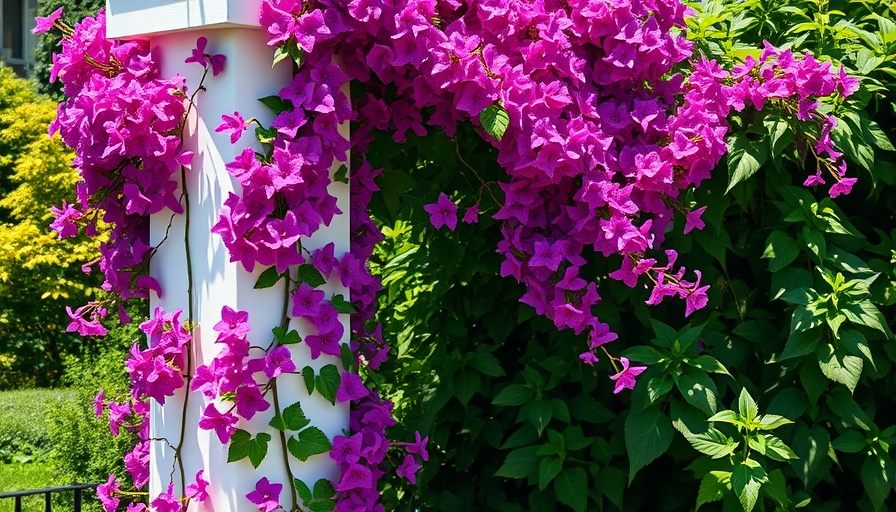
Transform Your Garden with Vertical Vines
Flowering vines have become an essential element in gardens, particularly for those looking to add aesthetic appeal and functionality to garden pillars. Imagine a simple structure transforms into a lush, blooming spectacle, creating a living canvas that changes with the seasons. This article explores how to leverage flowering vines effectively to enhance your outdoor spaces and why they are a perfect addition for every homeowner.
1. The Art of Vertical Gardening with Flowering Vines
Vertical gardening, a trending practice, involves utilizing upright surfaces for cultivating plants instead of growing them horizontally across the ground. This method is not only efficient in terms of space but also aesthetically pleasing. Vining plants such as clematis (Clematis spp.) or morning glory (Ipomoea purpurea) can transform a standard pillar into a vibrant piece of art. As these plants climb, they provide a breathtaking display that evolves daily, further enriching your garden's landscape.
2. Why Flowering Vines Matter: The Benefits
Using flowering vines for vertical gardening offers numerous advantages that should not be overlooked:
- Visual Appeal: Vines offer dynamic beauty, covering bare areas with a combination of lush leaves and colorful flowers. For instance, pairing a rustic wooden pillar with cascading clematis not only beautifies an area but creates a focal point that draws the eye.
- Space Efficiency: In smaller gardens, every inch counts. By guiding flowers upwards, homeowners can keep ground space clear and airy, allowing for more plants or seating areas.
- Wildlife Attraction: Incorporating plants such as honeysuckle (Lonicera spp.) can attract beneficial wildlife, including bees and butterflies, which helps with pollination while adding life to your garden.
3. Finding the Perfect Spot for Your Vines
The success of your vertical garden hinges largely on where you place your structures. Here are some tips for choosing the right location:
- Evaluate Sunlight Needs: Some plants, like climbing roses, thrive on direct sunlight for at least six hours a day, while others, such as ivy, prefer shady areas.
- Strategic Placement: Structures should be positioned to frame pathways, seating areas, or entryways. For example, a trellis entwined with vines can provide a sense of privacy near a bench, creating a charming retreat.
4. Ensuring Long-term Success with Your Vines
To maintain a thriving vertical garden, careful selection of both the pillars and plants is crucial. Sturdy structures that can support the weight of your climbing plants are a must. Also, always source plants from reputable nurseries to ensure you’re getting healthy specimens that can flourish in your garden.
5. Crafting Your Unique Garden Aesthetic
Matching the right flowering vine to the appropriate pillar can set the tone for your outdoor sanctuary. Whether you prefer the bold splendor of wisteria or the delicate beauty of jasmine, the right selection can elevate your backyard from ordinary to extraordinary.
Conclusion: Embrace the Beauty of Vertical Gardening
Incorporating flowering vines into your garden design not only enhances the beauty of your outdoor space but also encourages wildlife, improves gardening efficiency, and creates inviting nooks for relaxation. So, don’t hesitate—elevate your gardening game by utilizing these stunning vines. Your garden deserves to be a beautiful living space!
Ready to transform your home? Reach out to local landscaping experts through ProHomeGuides to start your project today!
 Add Row
Add Row  Add
Add 




Write A Comment